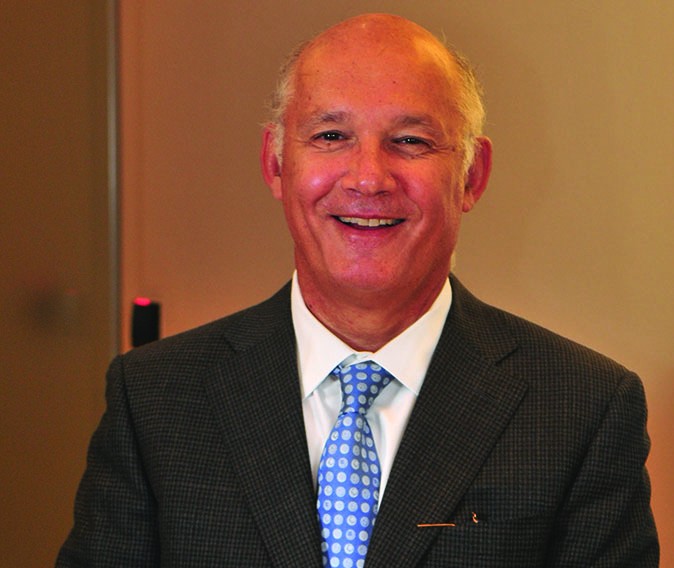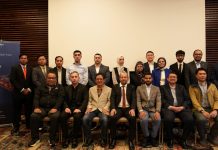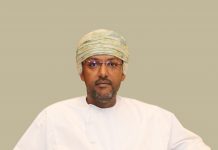Octal which accounts for 7.3 per cent of Oman’s total non-oil exports has sustained its growth momentum by raising production levels, expanding product ranges and adopting new technologies, says Nicholas P Barakat
The government is putting its best efforts, through various incentives to promote foreign investments and to give the manufacturing sector the push it needs. How are these measures going to accelerate the growth of Oman’s manufacturing sector and help achieve the goals of economic diversification?
For many years, Oman’s manufacturing sector has been at the forefront of the government’s plans, forming a strong component of the economic diversification strategy envisioned by His Majesty Sultan Qaboos bin Said. Steadily, the sector has grown into a key driver of employment and non-oil contributions to exports and the economy, with OCTAL’s sustainable success a prime example of the benefits manufacturing has been able to provide.
With the introduction of the Tanfeedh, the government has aimed at fast-tracking the growth of the sector to increase investment, employment of Omanis, and encourage more efficient use of natural resources. The outcomes of Tanfeedh, which are in full alignment with the Ninth Five-Year Plan and Strategy 2040, resulted in the development of a holistic plan to build on the achievements of previous years and identify opportunities to achieve complete diversification away from oil. To date, only a year after the strategy launched last year, already 10 per cent of the Tanfeedh initiatives for the industrial sector have been completed according to a review chaired by the Minister of Commerce and Industry in February 2017.
Massive progress, underpinned by the principles of Tanfeedh, is being made day by day. This is a result of the strategy’s emphasis on public-private partnership models to drive sustainable growth and development.
What are the main challenges facing the industries in Oman?
The economic slowdown resulting from the downturn in oil prices has had either a direct or indirect effect on every sector and industry in the Sultanate. In addition to that, another challenge that I would like to touch base upon is current skill gap between the current workforce and the next generation. We are working closely with the government and local educational partners to train the next generation of manufacturing employees and experts. The most significant factor is to inspire and nurture them to choose this sector as a career.
The ability of manufacturing enterprises in general to respond to these challenges varies from full control to partial or none. Nevertheless, it is on us to minimise their impact. For us at Octal, it is paramount to actually transform these challenges into opportunities. An example would be product development and innovation. You have to ensure your product keeps up with the lightning pace of innovation and ideally be ahead. This of course does not mean cutting corners and compromising your quality, rather be stringent in your standards and deliver. One of our key achievements in this regard was that we were the first company in the world to use Melt-to-Resin (MTR) process, eliminating the need for a solid state polymerisation plant. This is the kind of breakthroughs I am referring to when we talk about innovation and the future.
How is the recent performance of Octal and what are the milestone achievements of the company? What are the expansion plans?
Since inception in 2006, we have enjoyed year-on-year growth that continues to bring significant in-country value in the form of employment opportunities, exports, and investments in the communities we serve. That trend has only strengthened with time, leading us to account for 7.3 per cent of Oman’s total non-oil exports.
Over the past few months, we have continued to sustain that growth by raising production levels and expanding our product range. This includes the adoption of new technology to harness the power of innovation in all our operations. Two months after introducing high performance shift team system (HPSTS) in our plant, we registered our highest packaging production levels in December 2016. As we move deeper into the year, we anticipate these figures to be boosted by the introduction of several new innovative products.
Additionally, we are preparing to enter our third phase of development, which is geared towards downstream expansion with the long-term goal of an initial public offering to support global growth. Our first phase successfully allowed us to acquire and maintain a market leading position through the introduction of our environmentally-friendly products. During the second phase, we focused on disrupting existing markets through the use of new technologies that expanded the range of applications provided by our PET solutions.
This year we will also begin integrating our US and Saudi Arabia facilities to begin producing packaging material alongside their previous functions. Upon completion, both of those plants will be able to produce everything required throughout the manufacturing phase from raw materials to the final product at a significantly lower cost. This move will significantly increase the market reach and penetration of our products to new heights by maximising capacity.
Has the economic slowdown in Oman and in some of your export markets affected your performance?
Overall, our performance has grown stronger with time and we anticipate a 16 per cent increase in sales with production already under way on contracted orders valued at $260mn. As a company that has grown to be the world’s largest producer of PET sheet and integrated packaging solutions, we have overcome a wide range of economic conditions on our way to achieving year-on-year growth over the last decade.
With that said, our success has not been dependent on a favorable economic climate, rather it has been driven by our consistent ability to create and deploy disruptive technologies that have helped us redefine PET’s capabilities. This has given us a competitive advantage in all the markets we operate in or export to. As a result, we have continued to generate significant in-country value within the Sultanate as the largest exporter from the Port of Salalah, transporting 40,000 containers per annum.
What is your future outlook and what are the potential opportunities you are looking forward?
We currently have several projects in the pipeline that we anticipate will come to fruition in 2017. The first is a massive cost reduction programme that will enhance the efficiency of our waste management system. Secondly, as previously mentioned, we are aiming to transform our facilities in the US and Saudi Arabia.
Our overall outlook for the economy is positive as we strongly expect Oman’s non-oil sectors to continue to grow and compete on a global scale. We look at 2017 as a year of growth and opportunity, driven by greater access to finance, the completion of infrastructural projects, and increased government support as outlined by Tanfeedh.
Can you talk about your contributions to promote SMEs and what do you think about further investment opportunities for downstream projects in Salalah?
Since our inception, we have worked tirelessly to empower communities in the Sultanate by creating employment opportunities for youth and a high-value local supply chain. We prioritise local suppliers and service providers every step of the way, which has resulted in domestic supply, purchases that totaled RO3.1mn as of last year.
To that end, we employ Omanis across all levels of management, with many serving overseas in Saudi Arabia and the US in leadership roles. In addition to employing Omanis, we dedicate considerable resources to provide talented students with structured career paths as part of long-term partnerships with the Salalah College of Technology, Dhofar University, and other institutions.






